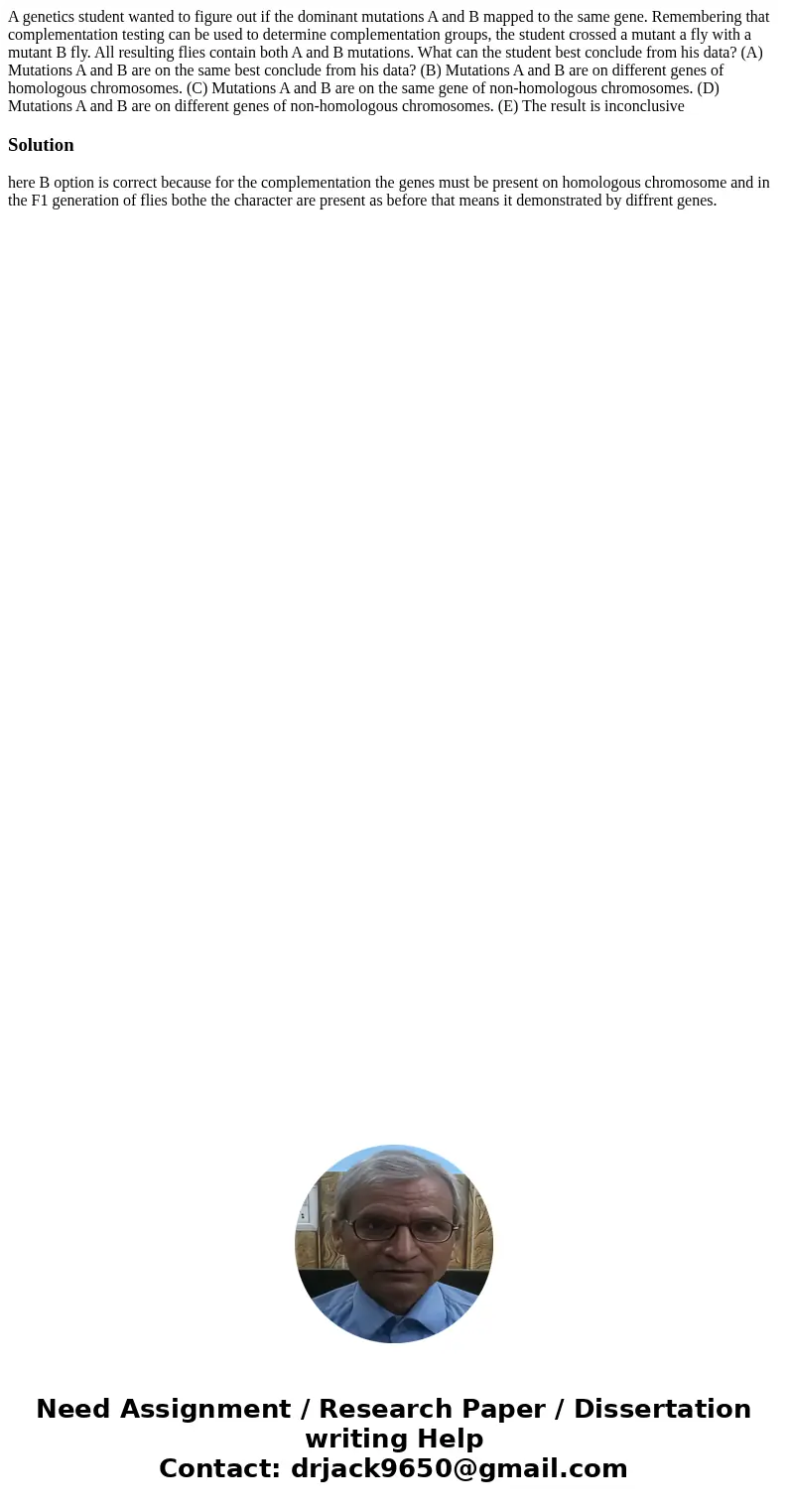A genetics student wanted to figure out if the dominant muta
A genetics student wanted to figure out if the dominant mutations A and B mapped to the same gene. Remembering that complementation testing can be used to determine complementation groups, the student crossed a mutant a fly with a mutant B fly. All resulting flies contain both A and B mutations. What can the student best conclude from his data? (A) Mutations A and B are on the same best conclude from his data? (B) Mutations A and B are on different genes of homologous chromosomes. (C) Mutations A and B are on the same gene of non-homologous chromosomes. (D) Mutations A and B are on different genes of non-homologous chromosomes. (E) The result is inconclusive
Solution
here B option is correct because for the complementation the genes must be present on homologous chromosome and in the F1 generation of flies bothe the character are present as before that means it demonstrated by diffrent genes.

 Homework Sourse
Homework Sourse